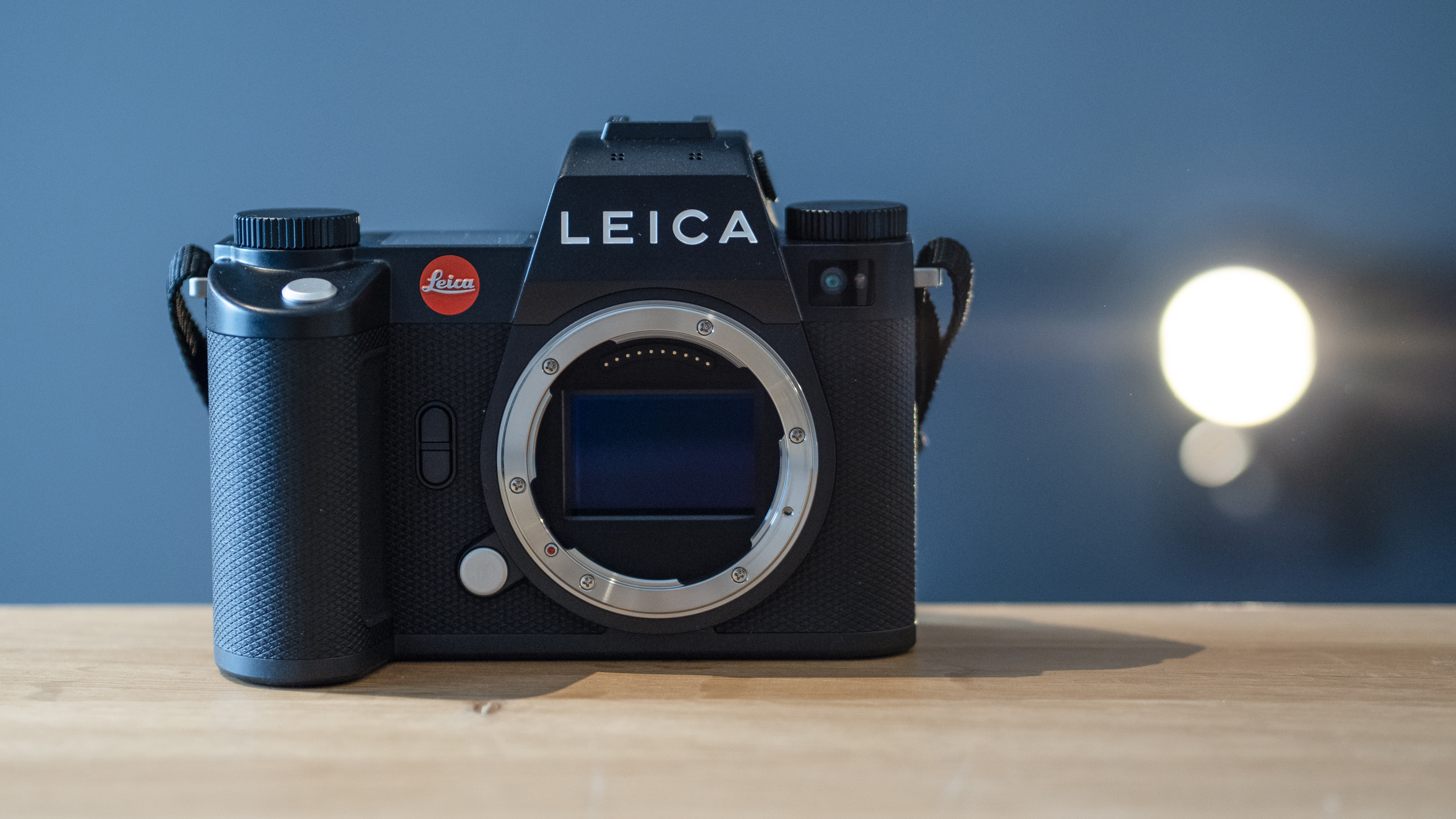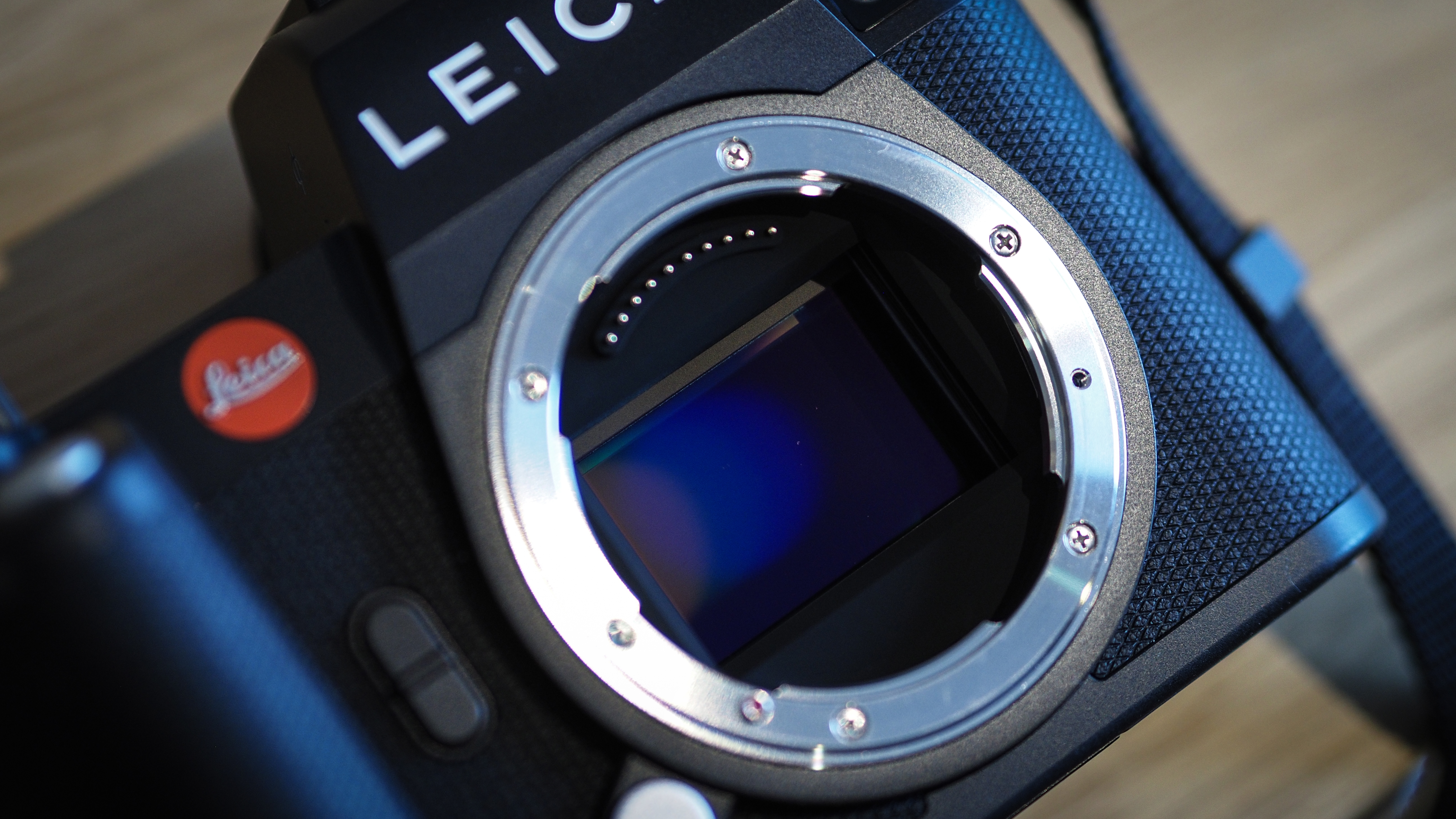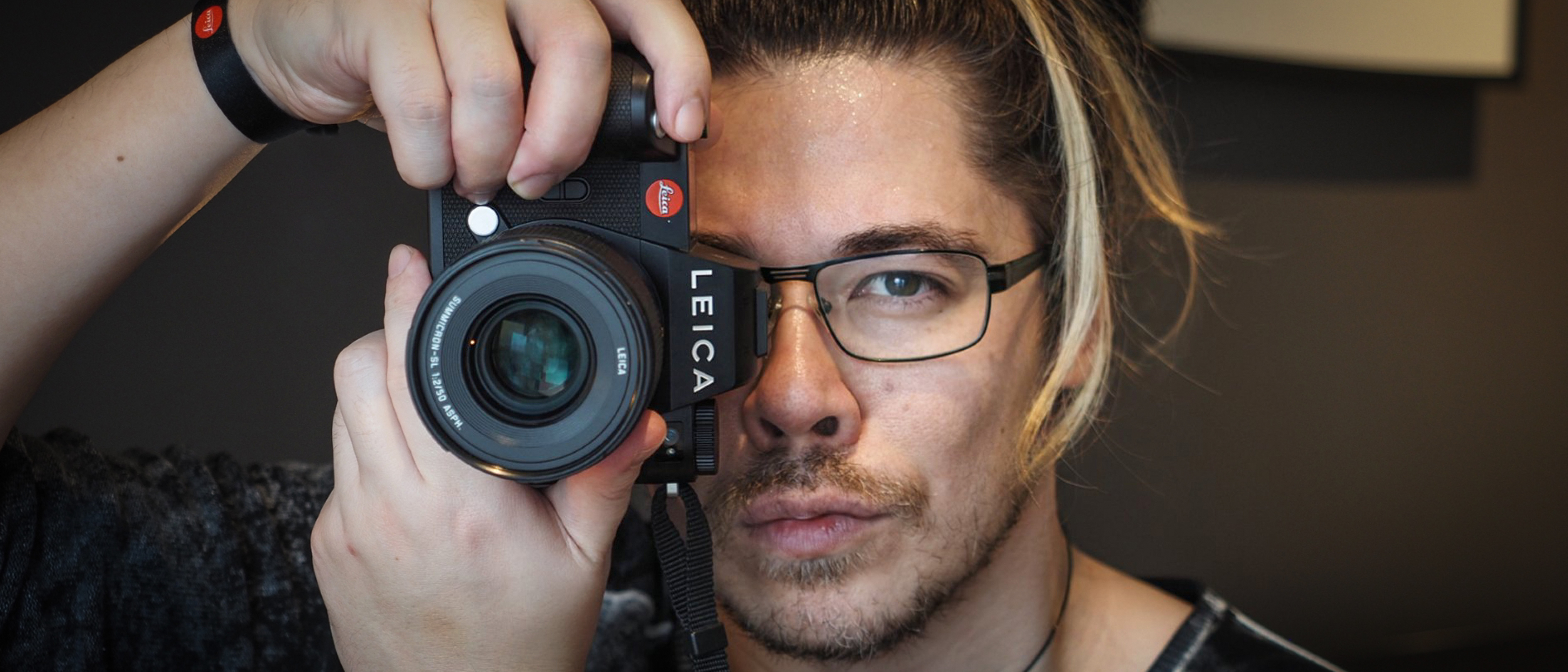Digital Camera World Verdict
The Leica SL3 is the best camera that Leica has ever made, even though I think it lacks the soul of a Red Dot rangefinder. And it packs so much firepower – between its multi-resolution 60MP sensor, 8K video, 15fps bursts and phase detect AF – that it's also the ultimate realization of the L-Mount system. It's not without a few foibles (the battery life is pretty miserly and the AF isn't as loyal as I'd like) but the SL3 is so good that this is the first Leica camera I would personally buy. Pair it with something like the 50mm Summicron and you will fall in love with photography all over again.
Pros
- +
Versatile 60.3MP sensor
- +
Up to 8K 30p video
- +
Phase detect autofocus
- +
Incredible image files
Cons
- -
Austere battery life
- -
Occasionally sluggish AF
- -
Tilt-only screen
- -
Limited burst shooting
Why you can trust Digital Camera World
The Leica SL3 is the first mirrorless camera from Leica that I've fallen in love with. I love using the M and Q cameras, but the SL series just never did it for me (and it certainly didn't help that they were disquietingly similar, other than the price tag, to Panasonic's S cameras).
However, the Leica SL3 absolutely knocks things out of the park in ways that its predecessors never managed. While it still lacks the soul of a Leica M11 or even the Leica Q3, this beautiful slab of scultped black metal is a straight-up spectacular imaging machine. With a 60.3MP sensor that delivers truly gorgeous stills, and supports 8K 30p video, it's the best Leica camera ever made.
In fact, the Leica SL3 is so good that it isn't just the best camera from Leica, it's one of the best mirrorless cameras period – and it demands attention not just from the Red Dot brigade, but from anyone seeking ultimate performance.
Leica SL3 review: Specifications
Sensor: 60.3MP back-side illuminated CMOS full frame
Lens mount: L-Mount
Processor: Leica Maestro IV
Autofocus: Hybrid phase detect with 215 fields
Image stabilization: 5-axis, up to 5 stops
Weather sealing: IP54
ISO range: 50 to 100,000 (Dual Basis ISO 50 to 280 / 320 to 100,00
Video: C8K 30p (10-bit, 4:2:0), 8K 30p (8-bit, 4:2:2), C4K / 4K (10-bit, 4:2:2), FullHD 120p (10-bit, 4:2:2)
Viewfinder: 5.76 million dots, 60fps or 120fps
LCD: 3.2-inch, 2.33 million-dot articulating touchscreen
Memory: 1x CFexpress Type B, 1x UHS-II SD
Max burst: 15fps no AF (buffer: 60 DNG / JPG / DNG+JPG), 5fps AF (90 / 90 / 75)
Max shutter: 1/16,000 sec electronic, 1/8,000 mechanical
Connectivity: WiFi MIMO 2x2, Bluetooth 5.0, Apple MFI, USB-C, HDMI 2.1, flash sync, headphone jack, microphone jack
Battery: 2,200mAh, 260 shots (CIPA rated)
Size: 151.45 x 108.05 x 84.6mm
Weight: 769g body only
Leica SL3 review: Key features
The Leica SL3 takes a number of technological cues from the Leica Q3, namely its triple resolution 60.3MP image sensor and phase detect autofocus – the latter being nothing short of transformative for the SL series.
Let's start with the sensor. Depending on your resolution and workflow needs, you can set the camera to capture a large, medium or small image, clocking in at 60.3MP (9520 x 6336), 36.4MP (7392 x 4928) or 18.5MP (5280 x 3504). On a similar note, but using different technology, the sensor also has an crop mode should you want to shoot in APS-C or Super35 format with a 1.5x crop factor.
The resolution makes the SL3 capable of 8K video up to 30p, with all the trimmings such as H.265 and ProRes protocols, timecode interface, Log mode and full-size HDMI port. The sensor is Dual Basis ISO, too, with a Low setting of ISO50-280 (ISO200-560 in Log) and a High of ISO320-100,000 (ISO640-100,000 in Log), adding to the video-friendly functionality.
The best camera deals, reviews, product advice, and unmissable photography news, direct to your inbox!
Accordingly, the Leica SL3 introduces support for the CFexpress Type B format to facilitate the fast transfer speeds needed for such high-resolution imaging. It features a CFexpress card slot along with a slot for UHS-II SD cards. Some might prefer an all-in approach with dual CFexpress cards, to deliver the highest possible speed and buffering (rather than there being a performance difference with the slower SD format), though many workflows will appreciate the ability to keep using the still-dominant SD cards.
Despite the faster memory format, Continuous shooting has taken a bit of a hit from the Leica SL2, down from a maximum burst of 20fps to a top speed of 15fps – and without autofocus. If you want AF while shooting, the burst speed is limited to 5fps. Arguably a resolution-oriented camera isn't designed for fast action, but the Sony A7R V manages 10fps with full autofocus.
Speaking of AF, the introduction of phase detect is an absolute revelation (at least for stills – more on that later). The old contrast-based system could be glacially slow and was frequently inaccurate in challenging light, drastically reducing its practicality. The new system, however, instantly springboards the SL3 up the leaderboard when it comes to AF performance – particularly with the promise of the new subject recognition algorithms.












Leica SL3 review: Build & handling
It can't have escaped your notice that the Leica SL3 is an absolutely beautiful camera. Yet its mesmerizing combination of curves and hard lines aren't just pretty to look at; they sit effortlessly in the hand and provide very comfortable ergonomics (perhaps surprising, for a vertical grip that has no contours for the fingers).
The SL3 is both lighter and subtly smaller than the SL2, but for me personally the biggest improvements come in the form of two particular physical redesigns. First off, the SL3 replaces its predecessor's fixed screen with a tilting touchscreen – which turns the camera from a viewfinder-only device to one that's instantly more formidable and versatile for low- and high-angle shooting.
It's not a perfect solution, however. The size of the overhanging viewfinder (and eyecup) is such that it obscures the screen if you only tilt it up, meaning that you have to fully deploy the mechanism to extend it away from the body. Not the end of the world, and will soon become muscle memory, but I did miss a couple of shots when I quickly flipped the screen to shoot waist level only to have a chunk of the view blocked.
In addition, while the screen tilts 90°C up, it doesn't tilt nearly so far in the opposite direction – so getting extreme high-angle or vertical shots is quite the challenge. It's here that a fully articulating screen would have been my preference, particularly since it also enables high- and low-angle shooting in portrait orientation.
However, Leica told me that a lot of research and consideration was taken when deciding on a tilt versus articulating screen – and there are a lot of people, namely street shooters, who abhor the full flippy screen. Given Leica's audience, the decision probably makes sense.
The second major improvement when it comes to ergonomics is the button placement on the rear of the camera. On the SL2, they were laid out to the left of the camera screen – meaning you had to use the camera in two hands. The SL3 sees this column of buttons shifted to the right, offering one-handed operation – again, something that suits the traditionally street-minded Leica crowd.
The weather sealing deserves a particular shoutout. Not only is the Leica SL3 certified to the IP54 standard (offering protection from dust ingress and water splashing from any direction), it is also guaranteed to work in temperatures from 14°F / -10°C to 104°F / 40°C. More than that, though, Leica explained that the camera is actually tested to tolerances of -40°F / -40°C to 158°F / 70°C – and it still works.
Leica's SL cameras have always had great menus, but the entire UX and UI of the SL3 has been overhauled to make things even better. If you're someone who customizes your camera and shooting modes, you'll be in heaven; the menu offers eight customizable tiles, to complement six customizable physical buttons on the body. Combined with six user profiles for photo mode and a further six for video, this offers a ridiculous amount of customizability.
The menus have also been made more instinctive and friendlier to the eye, with improved flows (by reducing the number of menu pages and items), streamlined and customizable screen and EVF displays, and a completely redesigned suite of icons – or "Leicons", as the design team was keen to dub them. Something else I love, and that I wish more cameras would incorporate, is that the EVF / screen display automatically "rolls" to adjust the layout when you shoot vertically.
Leica SL3 review: Performance
Overall I am blown away by what the Leica SL3 can do. Certainly in a photographic setting, it's a phenomenal imaging tool and an upgrade on the SL2 in virtually every way – and one of the best cameras I've ever used for shooting stills.
That 60.3MP sensor is simply a thing of beauty. Of course it gives you big fat resolution, but it also delivers the kind of color depth and dynamic range that's more in line with a medium format camera. Working with similar 60ishMP files from the Sony A7R V or Sigma fp L gives you nice chunky images to play with, but the 14-bit RAW files out of the SL3 really do have a special kind of dimension and detail.
Files straight out of camera are pristine, including JPGs – particularly when using the Leica Looks filters, downloaded from the Fotos app. Launching alongside the SL3 is a new Look called Eternal, which boosts the contrast, saturation and magenta level. Personally I'm happiest shooting in the gorgeous black-and-white mode, and the unedited JPGs are stunning.
The addition of phase detection absolutely transforms the SL from a camera you had to "work with" to a camera that "works for you", if that makes sense. The face and eye detect in particular behaved very well for me, though that was certainly put to the test when shooting in a studio setup with some very challenging ambient light.
We're certainly not talking Canon or Sony levels of robustness, but then this is still Leica's first generation of phase detect AF. The SL3 performs best, as you'd expect, in abundant light, clinging to body shapes and faces and making things like street photography a breeze.
It also handled objects, and particularly cars very well – though I was unable to test the animal AF as the lone subject I saw (an adorable dachshund) was too shy to have his picture taken. However, this is not an autofocus system designed for rapid action – something perhaps hinted at by the fact that continuous bursts only feature AF at 5fps. The system keeps up admirably with stationary, predictable subjects – so genres like portraiture and street photography are well suited – but fast-moving or haphazard subjects will reveal the cracks in the wallpaper.
The AF seems much less confident in video mode, too – particularly in low light. While it tracked obvious human subjects fairly well, it got lost quite easily with less obvious scenes (including cars) in the frame. It does at least recover, unlike the old contrast-detect AF, though sometimes this does give you the most dramatic rack focus imaginable while it finds something to lock onto.
The video formats and codecs on offer deliver beautiful footage when all the dominos line up – though I'd venture that the 8K from cameras like my Canon EOS R5 are a cut above.
While low light may challenge certain areas of the tech, it's certainly not a problem for the image sensor. It makes mincemeat of difficult light, thanks in large part to its Dual Basis ISO, with clean imagery that seldom betrays a lack of illumination during capture.
The in-body image stabilization system (IBIS) is very solid, but if you're used to the 8 stops of compensation offered by the likes of Canon, OM System and Fujifilm then you will definitely notice the difference with the 5 stops on offer here. While it's more than enough to deliver rock-solid stills, it's certainly not a replacement for a gimbal when shooting video (arguably no IBIS system is, but while I would be happy to steal handheld shots on other bodies I would be loath to do it with the SL3).
Perhaps the only true sore point here is the battery life. Usually the CIPA rating is a very conservative estimate that I sail past in actual use, but here it was depressingly accurate. On paper the SL3 is good for 260 shots, but at best I was only able to squeeze 267 with a few minutes of video and 272 with no video at all. (It's also worth noting that, while the battery from the SL2 will physically fit, it's a lower capacity cell and certain features on the SL3 are locked out.)
I do want to make special mention of the improved Leica Fotos app, and the frankly ridiculous speed of transferring files from your camera to your phone or tablet. Leica boasts that it can transfer a 60MB DNG via WiFi in just 2 seconds, and via cable connection in less than 1 second. While I didn't try the latter, I found WiFi transfer to be lightning-fast for both DNGs and JPGs – see it for yourself in the video below!
Leica SL3 review: Sample images
Leica SL3 review: Verdict
The Leica SL3 is the best camera that Leica has ever made, it is the best L-Mount camera on the market, and it is absolutely one of the best full frame mirrorless cameras you can buy.
There is no arguing with the images it produces; they are simply wonderful, and the versatility offered by the triple-resolution sensor is something that I wish was offered by every camera. The new autofocus system is great, if bettered by certain rivals, the weather sealing keeps you shooting regardless of conditions, and the workflow improvements offered by the improved Fotos functionality is a revelation.
I would have preferred an articulating screen, and I wish the battery life was better, but overall it's hard to find fault with this exceptional camera. That said, it is also an exceptional camera with a pretty steep price tag.
Leica cameras are luxury products, assembled by hand – and that comes at a certain premium. And while no amount of performance might justify the price tag to some, all I can say is that this is the first Leica camera I have ever been compelled to buy with my own money. It's that good.
Leica SL3 review: Scorecard
| Header Cell - Column 0 | Notes | Score |
|---|---|---|
| Features | With triple-resolution, 8K video, a new AF system and a great app, pickings are rich | 5 / 5 |
| Build & handling | The IP54 weather sealing and great ergonomics are great, though some might prefer a fully articulating screen | 4.5 / 5 |
| Performance | Simply the most gorgeous images you can get from a full frame camera | 4 / 5 |
| Value | This is a luxury, handmade camera with the performance to match | 4 / 5 |

James has 25 years experience as a journalist, serving as the head of Digital Camera World for 7 of them. He started working in the photography industry in 2014, product testing and shooting ad campaigns for Olympus, as well as clients like Aston Martin Racing, Elinchrom and L'Oréal. An Olympus / OM System, Canon and Hasselblad shooter, he has a wealth of knowledge on cameras of all makes – and he loves instant cameras, too.






















